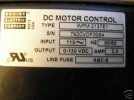In the US of A, 3 phase is not available to residential dwellings. In Europe it (sometimes) is.
Here the street power transformer has a secondary winding that gives you 240V. The winding is center-tapped, so you can have 120V too, going from the center to either lead. At the breaker box this center tapping (aka neutral) is wired to the ground.
The benefits of using 240V v 120v are 2-fold: you can have more power delivered to your appliance AND you will lower the current. Less current means you can use smaller-gage wires, they won't heat up as much and you won't have too much of a voltage drop and more of the voltage will make to the appliance.
With 240V wiring, both legs are HOT, as opposed to 120V, where 1 leg is hot and the other one is neutral (as it is connected to the ground at the breaker box). Hot legs will shock one when touched and possibly kill - if the current manages to find a path that goes through one's heart for example.
Hot legs are the ones that get fused and require breakers. So with 120V circuit you need a single pole breaker (one leg is hot, the other one's neutral), with 240V a double pole one (both legs are hot).
Most all appliances must be properly grounded - to the end each electrical circuit carries a ground wire. Appliances have a ground lug, usually something real solid to which that ground wire attaches.
The idea is have the appliance at ground potential (0) so you won't get shocked when you touch it/lean against it etc AND to have the fuses/breakers break the circuit pronto, should a hot wire ever get short-circuited to the appliance.
There's another aspect of electrical protection - especially for electrical wiring in dump/wet environments, such as shower, bath, industrial processing facilities -
if interested, you should read this
http://www.cpsc.gov/cpscpub/pubs/99.html
